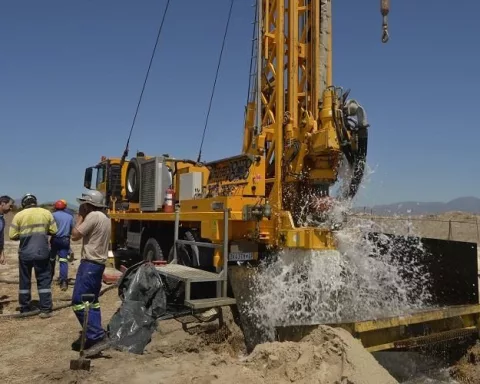Climate tech company Spiritus has pledged to offset the carbon emissions from Taylor Swift’s private flight from Japan to Las Vegas using its Direct Air Capture technology. The company’s innovative technology simulates the human lung to remove carbon from the air, potentially lowering the cost of carbon removal to under $100 per ton. Spiritus CEO Charles Cadieu emphasised the importance of carbon removal to combat environmental damage and make a sustainable future a reality. The initiative highlights the potential for everyday actions to impact climate change and encourages wider changes in environmental responsibility methods.
Can carbon emissions from private flights be counteracted?
Spiritus, a climate tech company, has pledged to counteract the carbon emissions from Taylor Swift’s upcoming private flight from Japan to Las Vegas through their Direct Air Capture technology. The cost of eliminating the carbon emissions from the flight could be as low as $4,000. This initiative highlights the potential for wider changes in environmental responsibility methods and the transformative power of innovation in making a sustainable world a tangible reality.
The recent endeavours of Spiritus, a trailblazer in the climate tech scene, show that cutting-edge solutions to tackle carbon emissions are not just hypothetical but are being actively applied. The company has made a significant promise to counteract the carbon emissions from Taylor Swift’s upcoming private flight from Japan to Las Vegas. This trip, spanning approximately 5,500 miles, is anticipated to produce roughly 40 tons of carbon emissions.
A Symbolic Gesture Towards Environmental Responsibility
This pledge goes beyond just being an environmental commitment. It serves as a powerful symbol, highlighting the capability of businesses and individuals to contribute meaningfully in the struggle against climate change. Swift’s flight, which is necessitated by her intention to be present to cheer on her boyfriend, Travis Kelce, at the Super Bowl, has been recast as a platform to demonstrate real-world climate action.
Spiritus’ CEO, Charles Cadieu, underscored the importance of carbon removal as a viable route to counteract environmental damage. He said, “In today’s world, everyone contributes to carbon footprint. However, carbon removal presents an opportunity for all of us to counteract the environmental damage.”
“Spiritus is fervently dedicated to delivering pioneering carbon removal solutions to guarantee a sustainable future and preservation of our environment for our present fans and for future generations yet unborn,” Cadieu further mentioned.
Cost-Effective Carbon Removal with Direct Air Capture
The initiatives undertaken by Spiritus have clear financial implications. The expense of offsetting the anticipated 40 metric tons of carbon emissions from Swift’s one-way trip using current technologies is roughly $28,000. This calculation is based on a rate of $700 per ton of removed CO2. Nonetheless, Spiritus is on a mission to significantly lower this cost.
Spiritus has devised a Direct Air Capture technology that simulates certain characteristics of the human lung. This technology has the potential to bring down the cost of carbon removal to under $100 per ton. By leveraging this technology, the total expense of eliminating the carbon emissions from the flight could be as low as $4,000.
For CEO Cadieu, Swift’s high-visibility flight represents a juncture where the urgency of climate action intersects with music. “It serves as a testament to how every action, regardless of its nature, can contribute to a more sustainable world,” he expressed.
The Difference Between Carbon Offsets and Carbon Removal
In this particular context, understanding the distinction between carbon offsets and carbon removal is crucial. It has been claimed by Swift’s representatives that they have procured “carbon offsets” for her flight. These offsets essentially entail paying someone else to abstain from emitting CO2. However, as suggested by its name, carbon removal actually eliminates an equivalent amount of CO2 from the atmosphere that you emit, thereby achieving a net-zero impact.
Cadieu further clarified this important difference: “When Taylor’s jet takes flight, it releases CO2 into the air. With offsets, you’re essentially paying someone else to refrain from emitting CO2 elsewhere. But with carbon removal, we actually extract the same amount of CO2 that Taylor’s jet emits, ensuring zero additional CO2. It is a more effective approach to combat climate change.”
Everyday Actions Impacting Climate Change
The efforts undertaken by companies like Spiritus indicate that combating climate change can be seamlessly incorporated into our everyday activities — be it rooting for our favorite pop star or rallying behind our preferred sports team. As we observe the unwavering commitment of companies like Spiritus, it also gives us a glimpse of the potential for wider changes in our environmental responsibility methods. These changes are a strong testament to the transformative power of innovation in making a sustainable world a tangible reality.
-
What is Spiritus and what is their pledge towards climate change mitigation?
Spiritus is a climate tech company that has pledged to offset the carbon emissions from Taylor Swift’s private flight from Japan to Las Vegas using their Direct Air Capture technology. -
What is the cost of eliminating the carbon emissions from the flight using current technologies?
The expense of offsetting the anticipated 40 metric tons of carbon emissions from Swift’s one-way trip using current technologies is roughly $28,000. -
How does Spiritus’ Direct Air Capture technology work and how does it lower the cost of carbon removal?
Spiritus’ Direct Air Capture technology simulates certain characteristics of the human lung and has the potential to bring down the cost of carbon removal to under $100 per ton. By leveraging this technology, the total expense of eliminating the carbon emissions from the flight could be as low as $4,000. -
What is the difference between carbon offsets and carbon removal?
Carbon offsets entail paying someone else to abstain from emitting CO2 while carbon removal eliminates an equivalent amount of CO2 from the atmosphere that you emit, achieving a net-zero impact. -
What is the significance of Spiritus’ pledge towards climate change mitigation?
Spiritus’ pledge serves as a powerful symbol, highlighting the capability of businesses and individuals to contribute meaningfully in the struggle against climate change. It encourages wider changes in environmental responsibility methods and emphasizes the transformative power of innovation in making a sustainable world a tangible reality. -
How can everyday actions impact climate change?
Efforts undertaken by companies like Spiritus show that combating climate change can be seamlessly incorporated into our everyday activities. It gives us a glimpse of the potential for wider changes in our environmental responsibility methods and the transformative power of innovation in making a sustainable world a tangible reality.












